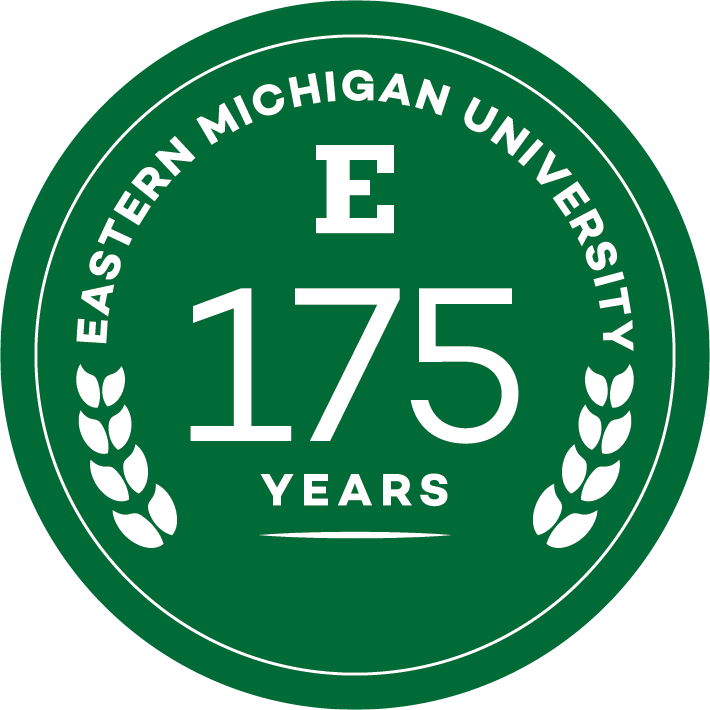Eastern Michigan University administration provides update on Black Student 10-Point Plan
Presentation to Black Student Union provides status report, shows progress in several areas
YPSILANTI -- At a meeting Tuesday, Dec. 6, with members of the Black Student Union at the Eastern Michigan University Student Center, Eastern Michigan University Associate Vice President for Student Affairs Calvin Phillips and Adviser to the President Leigh Greden provided an update on the status of efforts to implement the Black Student 10-Point Plan, a list of demands presented to University administrators by Black student leaders. Some areas of the plan have been completed, others show significant progress, while others remain under review.
Dr. Phillips said, “Work on the Black Student 10-Point Plan has been underway for nearly a year and progress is being made.”
Eastern’s Faculty Senate has approved a resolution authored by Professor Ronald Woods, Department of Africology & African American Studies, endorsing the “framework” of the Plan as a starting point for conversations to improve the campus climate, and referring the Plan to the President’s new Diversity and Inclusion Commission for specific recommendations.
Phillips added, “Senior staff of the University meet regularly with Black student leadership from Student Government, Black Student Union, EMU-NAACP, Diversity & Community Involvement, and other groups regarding these initiatives. These and other student leaders continue to receive multiple updates regarding campus initiatives and we continue to work together to keep everyone informed.”
The PowerPoint presentation that was provided at the December 6 meeting can be found at Black Student Union Presentation.
One of the key points of the plan calls for increasing the number of Black faculty. Several initiatives are underway in this area. Beginning this semester, all academic Department Heads and academic search committee chairs must undergo training designed to prevent bias in search processes. The training will be expanded to individuals who chair non-academic search committees.
Academic Human Resources, which reports to the Provost and manages the faculty hiring process, actively recruits for new faculty through diversity organizations and publications.
The efforts are working: 13 percent of new faculty hired for Fall 2016 self-identify as Black, reflecting a placement rate that exceeds the nationwide population and dramatically exceeds the available pool of Black faculty in virtually every academic discipline.
Another point of the plan calls for mandatory cultural competency training for all faculty and staff. Much of this already takes place and more will be instituted in the coming months. For example, Eastern’s Department of Safety already undergoes extensive and regular cultural competency training. Expanded training to University leadership and all current employees will be implemented in the coming months.
Another point in the Plan called for a designated space at the University where marginalized students can gather and learn about financial and academic resources available to Black students. “The Intersection” – a lounge in the Student Center for under-represented and under-privileged students – was planned over the summer, built with donor funds, and opened earlier this semester.
Following is a detailed point-by-point breakdown of each demand within the 10-point plan (IN BOLD TYPE) along with the University's progress or response to that particular element of the Plan, which actually features 11 points rather than 10.
#1: “Percentage of Black faculty to equal that of Black students at EMU (excluding Africology & African Studies faculty)”
The University recognizes the importance of our students having role models and mentors. Black students are 18 percent of the student body at EMU. The Black student leadership on campus understands the challenges in attempting to hire a corresponding percentage of Black faculty, including legal limitations and the fact that there is a limited national pool of black faculty. Nonetheless, EMU has taken several steps and is making progress enhancing the representation of black faculty.
- Search committees: Beginning this semester, all academic Department Heads and academic search committee representatives must undergo training designed to prevent bias in search processes. This training will be expanded to individuals who chair non-academic search committees.
- Outreach: Academic Human Resources, which reports to the Provost and manages the faculty hiring process, actively recruits new faculty through diversity organizations and publications. Hiring in all academic disciplines is carefully tracked to identify areas where efforts must be more intensive. In the vast majority of disciplines, our current pool of Black faculty exceeds the market availability. For example, 17.9 percent of Eastern’s School of Nursing faculty is Black, which equals our Black student population, whereas only 9.0 percent of the market of Nursing faculty is Black. In a few areas, however, our pool of Black faculty is below market. Academic Human Resources makes targeted efforts to support broad recruiting in these areas.
- Success: The efforts are working: 13 percent of new faculty hired for Fall 2016 self-identify as Black, which is an excellent placement rate that exceeds the nationwide population and exceeds the available pool of Black faculty in virtually every academic discipline.
#2: “All students will take a general course on race, ethnicity, and racism.”
Currently, all undergraduate students are required to take one course in “U.S. Diversity” as part of the General Education requirement. Examples of courses that meet this requirement include Interracial/Interethnic Communication, Civil Rights and Liberties in a Diverse U.S., Introduction to American Indian History, and African American Literature.
- The President of the Black Student Union had an initial meeting with the General Education Committee to discuss possible revisions to these requirements to ensure that students are more broadly exposed to issues related to bias and privilege. Additional meetings will occur.
#3: “A course on Black studies will be built into the curriculum of every major.”
Black student leaders are working closely with faculty administrators to explore curricular options to further this goal. There are well-understood challenges in attempting to incorporate Black studies into every major. For example, it may be difficult to incorporate Black studies into certain natural science majors, and doing so across all majors will require revisions to many courses.
#4: “Mandatory cultural competency training for all faculty and staff, including DPS”
Significant progress has been made in this area and communicated, in writing and verbally, to Black student leadership:
- DPS already undergoes extensive and regular cultural competency training.
- All of the President’s direct reports, and all of those individuals’ direct reports, will undergo comprehensive bias awareness and cultural competency training during this academic year.
- New Faculty Orientation will be modified to incorporate bias awareness and cultural competency training.
- Training to a broader group of current employees will be developed and rolled out in the coming months.
#5: “Designated space where marginalized students can gather safely and learn about financial and academic resources available to Black students.”
Completed. “The Intersection” – a lounge in the Student Center for under-represented and under-privileged students – was planned over the summer, built with donor funds, and opened earlier this semester.
#6: “Explore options for utilizing outside vendors to provide culturally appropriate food for certain student organization events.”
Dining Services asks that they be given the opportunity to meet all menu requests but, if they lack the capacity to meet cultural needs, they have always allowed clients to use outside vendors. For example, Jewish Studies events often use outside vendors because Dining Services cannot meet Kosher requirements.
#7: “Alternate meal plan options for low-income students”
With Chartwells having recently joined EMU, several options are being explored, including a designated program to provide a free meal plan to low-income students who work in Dining Services, or a specific plan for low-income students as part of a Financial Aid package. The Student Food Services Advisory Committee will review this request.
#8: “Professional staff designated to identify financial resources for Black students”
Completed. A financial aid staff member has been assigned to this role and is actively working with students.
#9: “Committee designated by members of BSU to serve on the Homecoming Committee with the freedom to plan events for Black Homecoming”
Completed. Additionally, the Associate Vice President for Student Affairs plans to designate a specific staff member to work with Black Homecoming. Budget was added to DCI in 2015 to accomplish this objective.
#10: “Doctorate and Master’s Program for Africology and African American Studies with adequate funding and no less than three full-time graduate assistantships”
The Africology & African American Studies Department has not submitted such a request. Such requests would come from the academic department.
#11: “Women’s Resource Center dedicate at least three program per year to black women faculty”
Completed: This was accomplished last year and is expected to be continued this year.
Other Initiatives
- Diversity Commission: At the November 1 Regents meeting, President Smith announced the creation of the President’s Commission on Diversity & Inclusion. The inaugural members of the Commission will be announced soon. The Commission has been charged with, among other items, conducting a comprehensive campus climate survey and making specific policy recommendations to the President on ways to enhance the campus climate.
- Cameras & Security: Black students have repeatedly asked for more cameras on campus to enhance campus safety. Two major steps were announced, both of which will be funded with existing budgeted resources:
- Dozens of new cameras will be added in two phases: (1) temporary cameras this fall and (2) permanent cameras in the spring in conjunction with the “Loop 1” reconstruction.
- An investment of more than $300,000 to upgrade the camera storage system to accommodate expansion of the program in future years.
- Installation of a new “Alertus” system to provide emergency alerts through the telephones and integrates with RAVE.
- Lighting: Students have also asked for more lighting. Several steps have taken place:
- New lighting will be added along Huron River Drive, on the north side of campus, this fall.
- Additional new and improved (closer to the ground) lighting will be installed on the main campus in the Spring in conjunction with the “Loop 1” reconstruction.
- Marketing: A team of faculty and Black student leaders are developing a new marketing campaign to promote positivity, breaking down stereotypes, and support for minority students.
- Programs and events: Recent and upcoming campus events include:
- TRUtalks was held in November featuring four faculty and staff to “encourage difficult conversations” about inclusive campus climate and diversity.
- A daylong “Teach-In” in November was organized by faculty and funded by the Provost’s Office.
- A unity rally organized by the leader of the Black Student Union to promote “positivity and unity” occurred on November 22.
- A student group is working with a faculty member to develop a community mural that will likely be painted in McKenny Hall in the future.
- Diversity & Community Involvement (DCI): The position of Director of DCI (which oversees diversity student programming in the Academic & Student Affairs Division) has been vacant since June. The position has been posted, a search committee formed, and the University hopes to have the position filled early next year.
- Inclusion Advisory Board: The Inclusion Advisory Board, which consists of leaders of campus diversity-focused student organizations, is being re-launched.
- Outreach: The President and other senior leaders have held numerous meetings and attending meetings with various groups, including the Black Student Union, other Black student leaders on campus, the EMU Chapter of the NAACP, Black alumni from various generations, and meetings with community and religious leaders from the Black community.
The administration is committed to continuing these and other initiatives and to regularly communicate with the campus community on the status of these efforts.
Details about the various institutional actions and responses to the discovery of hateful and racist messages directed at the Black community can be found on the University’s community information website.
December 09, 2016
Written by:
Geoff Larcom
Media Contact:
Geoff Larcom
glarcom@emich.edu
734-487-4400
More Stories
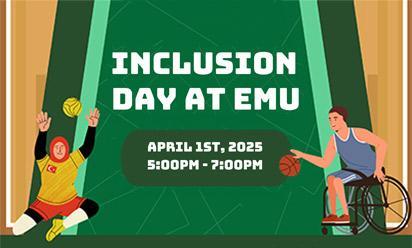
Eastern Michigan University student to host “Inclusion Day” to spotlight paralympic sports on April 1.

Eastern Michigan University now accepting applications for fall 2025 Master of Science in Management of Innovation and Strategy Program.
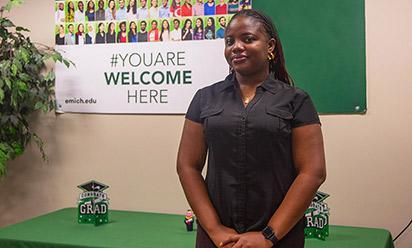
Eastern Michigan University student overcomes mental health struggles, becomes advocate for women and students in Nigeria.
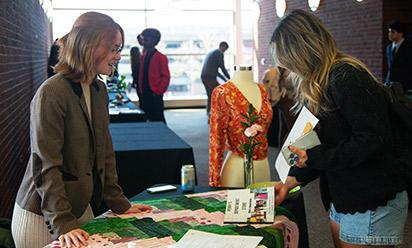
Eastern Michigan University’s Fashion Marketing Innovation Program hosts annual Portfolio Show.
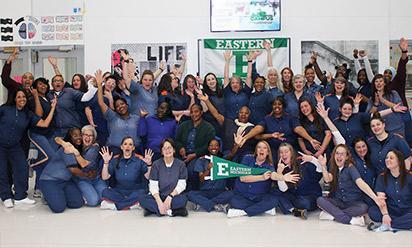
Students from Eastern Michigan University’s College in Prison program to present at 45th Undergraduate Research Symposium.

